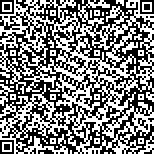| 摘要: |
| 循环水养殖系统具有节水、省地、环保等优点, 目前在国内外水产养殖中得到广泛应用, 养殖过程中水质的动态变化反映鱼类养殖生长环境状况, 氮磷收支规律反馈养殖系统是否具有高效性, 二者可评估特定养殖生物在特定养殖条件下的养殖效果。为了了解循环水养殖系统水质变化与氮磷收支规律, 通过对不同生长阶段(一龄与二龄)红鳍东方鲀循环水养殖系统的水质、鱼体及饲料中氮、磷的定期采样, 计算氮、磷的输入与输出量, 比较了系统水质变化与氮磷收支规律。结果显示, 一龄和二龄的红鳍东方鲀养殖系统分别在投喂后2、4、10、14 h和2、4、14、18 h出现营养盐浓度高值点, 建议针对处于不同生长阶段的红鳍东方鲀养殖系统需对不同时间段进行水质重点监测, 主成分分析表明亚硝酸盐氮和硝酸盐氮参数可作为红鳍东方鲀循环水养殖水质的指示因子。一龄和二龄的红鳍东方鲀养殖系统中用于鱼体生长发育的氮元素分别占总输出的25.16%和28.41%, 用于鱼体生长发育的磷元素分别占总输出的47.37%和51.66%, 二龄的红鳍东方鲀养殖系统与一龄养殖系统的氮磷吸收率相比有显著性提高(P<0.05)。实际生产中可通过增加二龄红鳍东方鲀专用饲料蛋白质与磷元素含量, 提升养殖产量。研究阐明了循环水养殖系统水质变化与氮磷收支规律, 营养物质的来源与归宿, 对合理评价系统的经济与生态效益、优化系统工艺参数具有指导意义。 |
| 关键词: 红鳍东方鲀 循环水养殖系统 水质 氮磷收支 |
| DOI:10.11693/hyhz20220900240 |
| 分类号:S965; S954 |
| 基金项目:国家重点研发计划资助项目,2020YFD0900600号,2019YFD0900504号 |
附件 |
|
| STUDY ON NITROGEN/PHOSPHORUS BUDGET AND WATER QUALITY CONTROL OF RECIRCULATING AQUACULTURE SYSTEM OF TAKIFUGU RUBRIPES IN DIFFERENT AGES |
|
ZHANG Xiang-Yu1, SONG Xie-Fa1, YU Zhi-Hai1, SONG Yuan-Zhao2, SU Peng3, DONG Deng-Pan1, LI Xian1
|
|
1.Fisheries College, Ocean University of China, Qingdao 266003, China;2.Institute of Oceanology, Chinese Academy of Sciences, Qingdao 266071, China;3.Dalian Fugu Corporation, Dalian 116400, China
|
| Abstract: |
| Recirculating aquaculture system (RAS) has the advantages of water saving, land saving and environmental protection. The change of water quality reflects the aquaculture environment. The nitrogen (N) and phosphorus (P) budget assessment benefits the culture under specific aquaculture conditions. To understand water quality change and N and P budget in RAS, one- and two-year-old Takifugu rubripes were cultured separately in RAS for 42 days. The initial and final values of body weight, density, and total biomass were recorded; and physical and chemical indices were measured from water and solid residues (food leftover and feces) samples at specific time points, from which the input/output of N and P in the two RASs were analyzed. Variations in water quality and N and P budget in the two RASs were compared. Results show that the nutrient salt concentration boosted at 2, 4, 10, 14 hours after feeding for the one-year-old and 2, 4, 14, 18 hours for the two-year-old, which provided the reference timing for water quality control. Nitrite nitrogen and nitrate nitrogen could be used to indicate water quality as shown in the principal component analysis. Of the total N (P) input, 25.16% (47.37%) and 28.41% (51.66%) were used for growth in the one- and two-year-old RASs, respectively. The N and P absorption rates in RAS of the two-year-old were much greater than those of the one-year-old. Therefore in aquatic production, the yield of the culture can be enhanced by increasing the content of protein and P in the special feed for two-year-old pufferfish in RAS. This study clarified the source and destination of nutrients in RAS, and provided a reference for the assessment of economic and ecological benefits and optimal parameterization of the RAS. |
| Key words: Takifugu rubripes recirculating aquaculture system water quality nitrogen and phosphorus budget |
